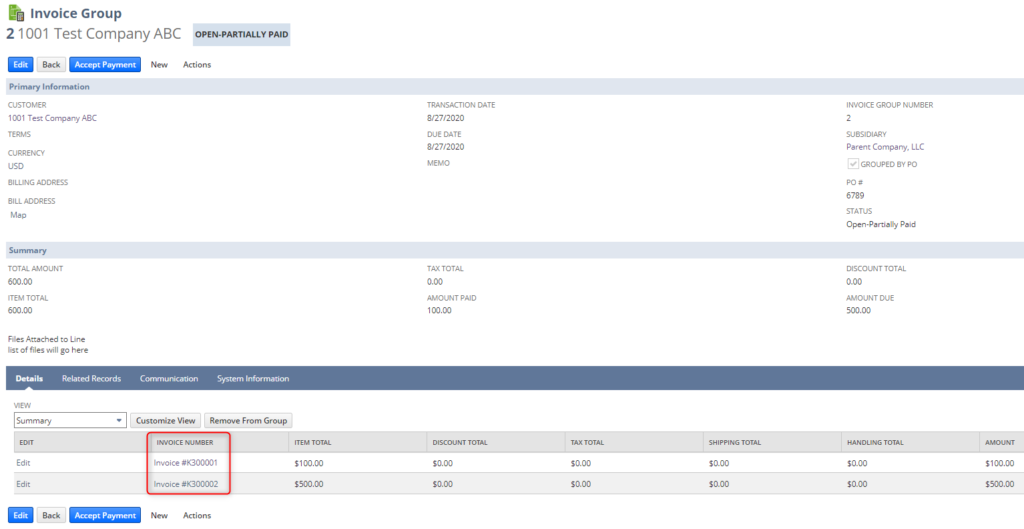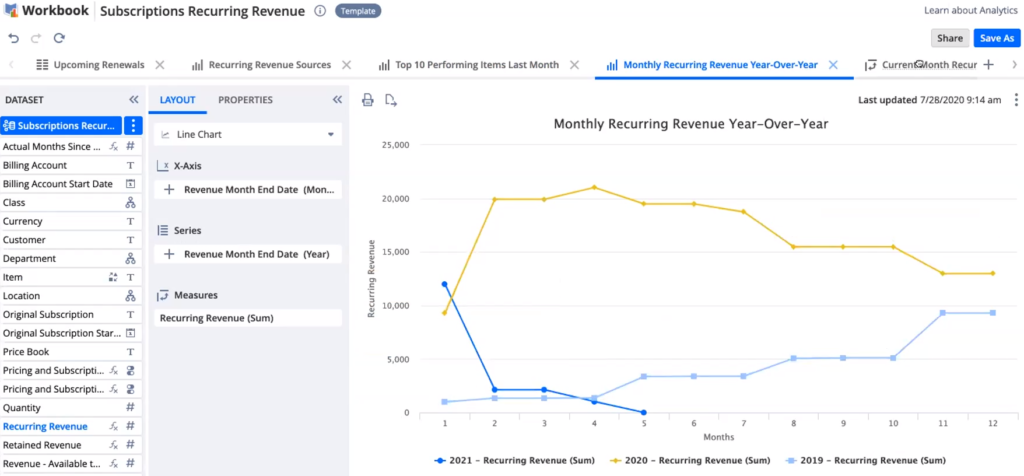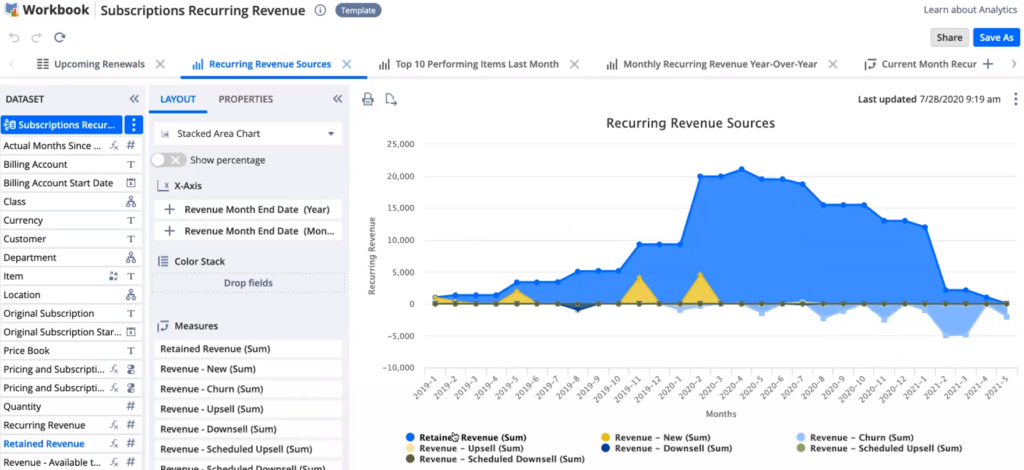Top 10 Most Significant Updates in the 2020.2 NetSuite Release

NetSuite 2020.2 has arrived! NetSuite rolls out product upgrades twice per year to provide requested features, upgrades to existing features, or bug fixes for all NetSuite accounts. In 2020.2, we see critical additions and innovations to different aspects of NetSuite with impacts to a large variety of industries including Software, Manufacturing, and Services. These new enhancements offer ways to improve business processes, remove the need for customizations, or provide brand new functionality for businesses looking to improve their operations. Preparation is key for a smooth and successful release upgrade. Therefore, make sure to refer to the updates and additional information below to be fully prepared.
Here is our list of the Top 10 Most Significant Updates in the 2020.2 NetSuite Release
Note: these are in no particular order. We’ve also included a few helpful resources to ensure your NetSuite account is ready to adopt the latest updates.
INVOICE GROUPS
Use the Invoice Groups feature to combine invoices for your customers. Combine invoices into groups based on characteristics the invoices share. A customer can have multiple invoice groups based on the different criteria for each group. An invoice group is not a transaction, but it functions similarly to an invoice. You can use an invoice group to complete the following tasks:
- Set up custom numbering
- Customize the Invoice Group form
- Accept customer payments
Invoice groups work with SuiteFlow. They appear in searches and in reports and they can appear on customer statements. Invoice groups do not post to the general ledger and invoices within the invoice group post to the general ledger. After an invoice group is created, you can add or remove invoices from the group.
FRAMEWORK SUBSIDIARY CONFIGURATION
In 2020.2, NetSuite introduces the Intercompany Framework feature. This feature includes new functionality to help you manage cross-subsidiary business workflows. You can define default cross charge classification preferences for one or multiple subsidiaries through the Subsidiary Settings Manager page. The Intercompany Framework feature uses these preferences during cross charge automation. For information, see the following help topics:
-
- Subsidiary Settings Manager
- Defining Default Cross Charge Classification Preferences for a Specific Subsidiary
- Defining Default Cross Charge Classification Preferences for Multiple Subsidiaries
AUTO-CREATE ACCOUNT TRANSACTIONS FROM BANK IMPORT
In this release, you can automate the process of creating and matching account transactions with imported bank data. Auto-create rules enable you to automatically create and match the following transactions:
- Deposits and charges for general ledger bank accounts
- Charges and refunds for general ledger credit card accounts
Consequently, you no longer need to manually enter an account transaction for every imported bank line that does not have a corresponding transaction in NetSuite. If you import bank lines with a recurring Payor/Payee or Memo, auto-create rules look for imported bank lines with the transaction type and Payor/Payee specified by the rule. If the imported bank line has no Payor/Payee, the rule looks for the Memo that was specified.
NEW PERFORMANCE MANAGEMENT FEATURE
NetSuite 2020.2 introduces a new SuitePeople HR feature called Performance Management. With this feature, you can track and review employee performance. Performance Management includes the following functionalities:
GOAL MANAGEMENT
- Employee ownership of goals
- Manager approval and collaboration
- Performance metrics
- Reporting capabilities
PERFORMANCE REVIEWS
- Performance review setup and creation
- Goals integration and review completion
- Reporting and search capabilities
The Performance Management feature includes new permission called Talent Administration.
SUPPLY PLANNING
Supply planning takes sales order details to generate dependent demand for work order components. The tool enables you to balance supply and demand to achieve your organization’s financial and service objectives. The NetSuite Supply Planning process starts when one transaction, or a combination of transactions (Purchase Order, Transfer Order, or Work Order), are created or initiated. The Item Demand Plan records the expected future demand for an item based on previous or projected demand, and inventory supply is matched to demand sources. All this information is stored in the Planning Repository.
To learn more, see the help topic Supply Planning. Supply Planning offers the following functionality:
-
- The Planning Repository
- Supply Plan Definition
- The Planning Engine
- Supply Planning Workbench
- Implement and Approve Orders
MONTHLY RECURRING REVENUE WORKBOOK
SuiteBilling releases its first SuiteAnalytics Workbook, focusing on monthly recurring revenue. This feature includes the record, dataset template, and workbook template.
Use the standard workbook template for analytics on recurring revenue, churn, upsell, downsell, and renewal revenue for all your subscriptions. Customize views with additional filters and data by modifying the workbook template and dataset template. Choose to visualize the data as a table, chart, or pivot. The workbook lets you compare revenue trends and details through the following customizable views:
- Monthly Recurring Revenue Year-over-Year
- Current Month Recurring Revenue
- Monthly Recurring Revenue by Class
- Recurring Revenue Sources
- Upcoming Renewals
- Top 10 Performing Items Last Month
MULTIPLE DATASETS IN ONE WORKBOOK
As of 2020.2, you can connect multiple datasets to a single SuiteAnalytics workbook, and any visualization within the workbook can be based on a different dataset. This enhancement enables you to analyze different metrics without switching between browser tabs or creating multiple workbooks. For example, if you are a sales representative and you want to analyze your actual performance and your sales targets, you can now do so within the same workbook. From a collaboration perspective, this change also means that you can now share a single workbook with other users, as opposed to sharing multiple workbooks or datasets.
RECORDS CATALOG
NetSuite 2020.2 introduces the Records Catalog. Here you can find information about the record types, fields, and relationships available for a specific NetSuite channel. Similar to the SuiteScript Records Browser, the Records Catalog organizes metadata, such as field IDs and script IDs, and supports learning about the NetSuite data model. However, unlike the SuiteScript Records Browser, the new Records Catalog includes custom records, forms, and fields in the current user’s account and only includes data based on the features currently enabled in the account. The Records Catalog is accessible within your NetSuite account.
ENHANCED WORKFLOW SUBLIST SUPPORT
Enhanced sublist support has been added to SuiteFlow. This enhancement enables further customization of workflows based on the unique needs of your business.
It includes the following:
-
- Custom fields on the Expenses sublist are now exposed and available to all sublist actions. Previously, support for custom fields was limited to the Items sublist only. Now, you can use the custom fields on the Expenses sublist in Sublist Action Groups.
- The Set Field Display Type workflow action is now supported on the Expenses sublist. You can use the Set Field Display Type workflow action with standard and custom fields on the Expenses sublist.
- The Set Field Display Type workflow action is now supported on standard fields on the Items sublist.
CODE SAMPLE HIGHLIGHTING
As of 2020.2, SuiteAnswers now has a new code sample highlighting features that highlight lines or parts of code samples in all types of articles, which results in better readability of the code samples. The code samples now also include a Copy button that you can use to copy the whole code sample onto your clipboard.
For more detailed information, read about all the new enhancements & functionality in the 2020.2 Release Notes. Access this from the New Release Portal on your Dashboard or in SuiteAnswers. It is critical to thoroughly test any potentially affected areas in the Release Preview account in order to prepare for any changes that may impact your business. Be sure to review all the release preview information and formulate a testing plan for a successful release transition.
For more detailed information, read about all the new enhancements & functionality in the 2020.2 Release Notes. Access this from the New Release Portal on your Dashboard or in SuiteAnswers. It is critical to thoroughly test any potentially affected areas in the Release Preview account in order to prepare for any changes that may impact your business. Be sure to review all the release preview information and formulate a testing plan for a successful release transition.
If you need more information or guidance to get ready for the new release, check out these helpful NetSuite resources:
- NetSuite 2020 Release 2 Podcast
- NetSuite 2020 Release 2 Industry Details
- NetSuite New Release Process
LOOKING FOR NETSUITE EXPERTISE?
Our large team of NetSuite ERP Consultants and SuiteCloud Developers are here to help you make the most of your implementation & account. If you have any questions about the upcoming new release or would like help preparing your organization for the transition, please reach out!








